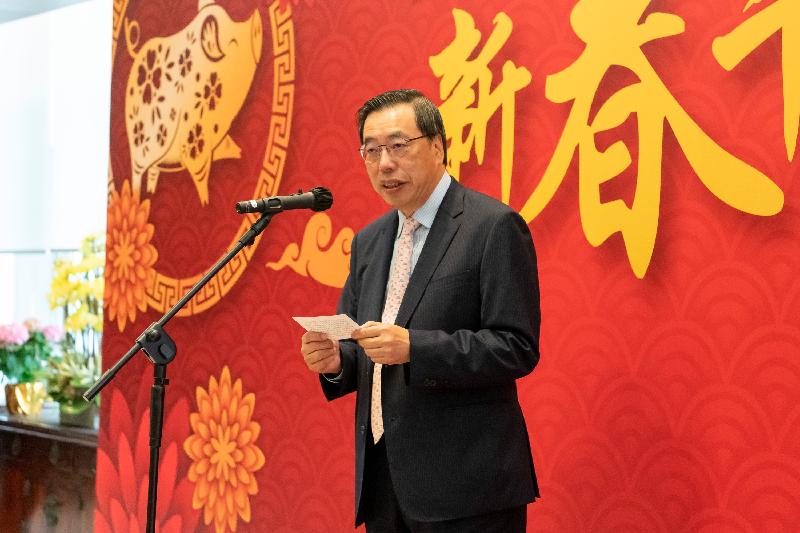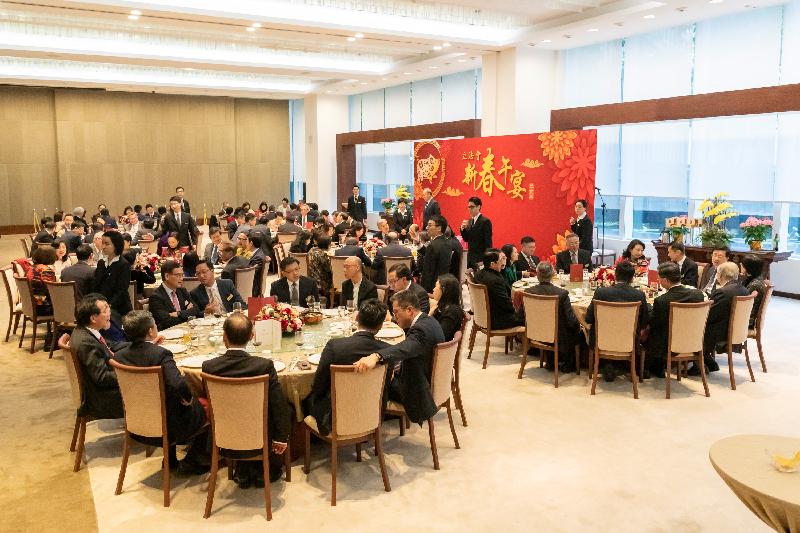LegCo to consider motion under Legislative Council (Powers and Privileges) Ordinance
The following is issued on behalf of the Legislative Council Secretariat:
The Legislative Council (LegCo) will hold a meeting on Wednesday (February 20) at 11.30 am (or immediately after the meeting for the Chief Executive's Question Time to be held at 11am) in the Chamber of the LegCo Complex. During the meeting, Members will consider a motion under the Legislative Council (Powers and Privileges) Ordinance.
The motion, to be moved by Ms Tanya Chan, states: "That this Council appoints a select committee to inquire into the incomplete construction documentation and construction changes not authorised by the Government in relation to the North Approach Tunnel, South Approach Tunnel and stabling sidings of the extension works of Hung Hom Station under construction contract number 1112 'Hung Hom Station and Stabling Sidings' of the Shatin to Central Link, and other related matters, and that in the performance of its duties the committee be authorised under section 9(2) of the Legislative Council (Powers and Privileges) Ordinance (Cap. 382) to exercise the powers conferred by section 9(1) of that Ordinance."
Mr Paul Tse will move a proposed resolution under Article 75 of the Basic Law of the Hong Kong Special Administrative Region of the People's Republic of China to amend the LegCo Rules of Procedure as set out in the Appendix.
On other Members' motions, Dr Junius Ho will move a motion on revitalising the Mandatory Provident Fund. The motion states: "That the fundamental concept of the Mandatory Provident Fund (MPF) schemes is to enable working persons to make personal savings through contributions from both employees and employers and receive returns derived from investment of the funds, so as to assist members of the public in coping with life after retirement; from December 2000 to the end of 2017, although the total MPF assets have exceeded $844 billion, the assets have in fact been eroded by inflation, and the return rates have invariably been far from satisfactory over the years; according to a market report in mid-2018, calculated on the basis of MPF's overall performance, the average loss of each scheme member has exceeded $8,000, rendering MPF's real purchasing power being almost exhausted after several decades, which is a worrying situation; in order to put the retirement savings of scheme members to more practical use, this Council urges the Government to revitalise MPF by allowing scheme members flexibility and autonomy in using MPF to take out medical insurance, so that when they fall ill, besides seeking medical treatment under the public healthcare system, they may also choose to go to private healthcare institutions, so as to receive appropriate treatment expeditiously; this proposal not only can protect the personal health of members of the public, but also relieve the pressure on the public healthcare system."
Mr Chan Kin-por, Mr Luk Chung-hung, Mr Wong Ting-kwong, Dr Kwok Ka-ki, Dr Fernando Cheung and Mr Paul Tse will move separate amendments to Dr Junius Ho's motion.
Mr Vincent Cheng will move a motion on increasing transitional housing supply. The motion states: "That, according to the projection in the Long Term Housing Strategy Annual Progress Report 2018, over 110 000 households in Hong Kong live in inadequate housing conditions; prior to the allocation of public housing units for such households, transitional housing is an important housing option for them; yet, the failure to include transitional housing in the Long Term Housing Strategy announced on December 16, 2014 and its subsequent annual reviews has resulted in a lack of policy and financial support for transitional housing and its supply stagnancy; in this connection, this Council urges the Government to adopt the following measures to substantially increase transitional housing supply, in a bid to improve the living environment of families living in inadequate housing conditions:
(1) to include transitional housing in the Long Term Housing Strategy, and formulate a supply target for transitional housing, including setting the target of its total supply within the next three years at no less than 10 000 units;
(2) to invite the Hong Kong Housing Authority, the Hong Kong Housing Society and the Urban Renewal Authority to actively increase the provision of transitional housing;
(3) to introduce policies for encouraging private property owners to convert their residential properties or whole blocks of industrial buildings into transitional housing;
(4) to establish a transitional housing fund of no less than $2 billion, so as to take forward and support various transitional housing schemes; and
(5) to make public a list of idle government lands or facilities that are suitable for transitional housing purpose, including those lands or facilities with tenure or tenancies due to expire within one year, so as to enable the relevant organisations to study and prepare for any transitional housing programmes as early as possible."
Mr Tony Tse, Ms Alice Mak, Mr Shiu Ka-chun, Mr Andrew Wan, Mr Chu Hoi-dick, Mr Jeremy Tam and Mr Leung Yiu-chung will move separate amendments to Mr Vincent Cheng's motion.
Meanwhile, Ms Starry Lee will move a proposed resolution under section 34(4) of the Interpretation and General Clauses Ordinance to extend the period for amending the Minimum Wage Ordinance (Amendment of Schedule 3) Notice 2019 and the Employment Ordinance (Amendment of Ninth Schedule) Notice 2019 laid on the table of the Council on January 23, 2019 to the meeting of March 20, 2019.
On Government Bills, the Smoking (Public Health) (Amendment) Bill 2019 and the Trade Marks (Amendment) Bill 2019 will be introduced into the Council for the First Reading and the Second Reading. The Second Reading debate on the Bills will be adjourned.
The Second Reading debate on the Inland Revenue (Profits Tax Exemption for Funds) (Amendment) Bill 2018 and the Inland Revenue (Amendment) (No.7) Bill 2018 will resume. If the Bills are supported by Members and receive their Second Reading, they will stand committed to the committee of the whole Council. After the committee of the whole Council has completed consideration of the Bills and their reports are adopted by the Council, the Bills will be set down for the Third Reading.
Members will also ask the Government 22 questions on various policy areas, six of which require oral replies.
The agenda of the above meeting can be obtained via the LegCo Website (www.legco.gov.hk). Please note that the agenda is subject to change, and the latest information about the agenda could be found on the LegCo Website.
Members of the public are welcome to observe the proceedings of the meeting from the public galleries of the Chamber of the LegCo Complex. They may reserve seats by calling 3919 3399 during office hours. Members of the public can also watch or listen to the meeting via the "Webcast" system on the LegCo Website.



